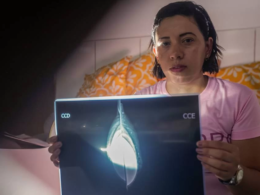the health strategist
institute for strategic health transformation
& digital technology
Joaquim Cardoso MSc.
Chief Research and Strategy Officer (CRSO),
Chief Editor and Senior Advisor
October 4, 2023
One page summary
What is the message?
The UK government’s £30 million ($36 million) investment in medical technology for the National Health Service (NHS) aims to revolutionize patient care, reduce waiting times, expedite diagnoses, and enhance treatment methods.
While seen as a step in the right direction, some critics compare it unfavorably to previous funding efforts.

Key Takeaways
Government Investment in Medical Technology:
The UK government has allocated £30 million ($36 million) for medical technology aimed at pressure on the NHS. This funding is intended to modernize healthcare, improving patient care and outcomes.
Enhancing Patient Care and Reducing Waiting Lists:
The investment seeks to boost patient care by leveraging innovative technologies. It aims to reduce waiting lists for medical services, addressing a long-standing issue in the NHS.
Accelerating Diagnoses:
The funds will support the development and adoption of technologies designed to expedite diagnoses, enabling healthcare providers to identify and treat patients more efficiently.
Virtual Wards and Remote Patient Care:
Virtual wards, which have already demonstrated their effectiveness, will receive a significant portion of the funding. Over 9,800 virtual ward beds are currently in use, with an additional 10,000 to be delivered before winter. These virtual wards enable remote patient care.
Wearable Devices for Monitoring Chronic Conditions:
The investment will promote the use of wearable medical devices that allow patients to monitor chronic conditions from the comfort of their homes. These devices track vital signs like blood oxygen levels, heartbeat, and blood pressure.
Integrated Care System (ICS) Funding:
Integrated care systems (ICSs) across England can apply for funding from the Department of Health and Social Care (DHSC) and NHS England (NHSE). Application opportunities are set to open in October.
Technological Advancements in Diagnostics:
The funding will facilitate advancements in diagnostic tests by integrating digital 3D and other imaging technologies, enhancing the accuracy and efficiency of healthcare diagnostics.
Criticism of Funding Level:
Despite this initiative’s positive intent, some critics have deemed the £30 million investment as insufficient when compared to the £680 million unified tech fund from two years ago.
AI Diagnostics Fund:
This investment builds upon the £21 million artificial intelligence (AI) diagnostics fund, which focuses on the rapid implementation of AI technology for diagnosing and treating conditions such as cancer, stroke, and heart conditions.
Statistics
- Over 9,800 virtual ward beds are currently in use, with an additional 10,000 to be delivered before winter.
Examples
- Dr. Vin Diwakar, NHS interim national director of transformation, highlighted the success of virtual wards, which have already helped over 210,000 patients receive treatment at home.
- Wearable medical devices will enable patients to monitor vital signs like blood oxygen levels, heartbeat, and blood pressure, contributing to better health management.
In conclusion
The UK government’s investment in medical technology for the NHS is a significant step toward improving healthcare services, patient care, and diagnosis efficiency.
However, criticism regarding the funding level underscores the challenges of adequately financing healthcare innovation.
DEEP DIVE

This summary was written based on the article “NHS snags $ 36m for innovative medtech”, published by the Medical Device Network and written by Kiays Khalil , on October 4, 2023.
To read the full article, click here











